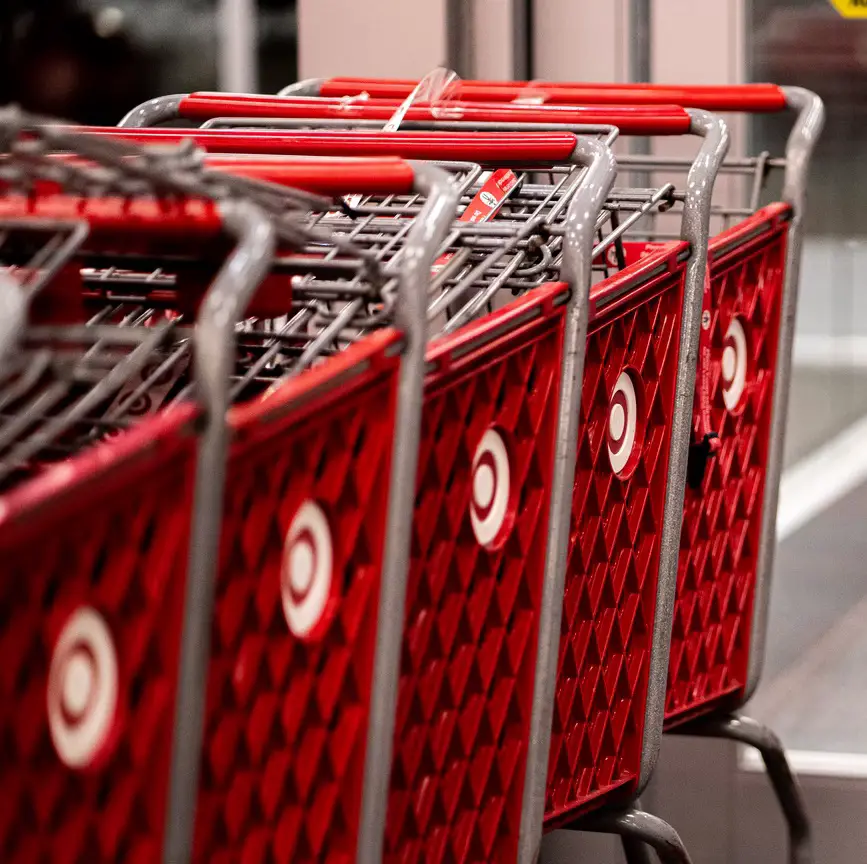Target issued a warning to investors on Tuesday, saying its profits are going to take a short-term loss as it adjusts its inventory and supply chain, getting rid of unwanted items, canceling orders, and organizing future deliveries for needed stock. Fiscal second quarter profit expectations were slashed, largely to account for stocks of items it will discount heavily to clear them from inventory.
Shares closed down 2.31% Tuesday, at $155.98
CEO Brian Cornell said in an interview, “We thought it was prudent for us to be decisive, act quickly, get out in front of this, address and optimize our inventory in the second quarter — take those actions necessary to remove the excess inventory and set ourselves up to continue to be guest relevant with our assortment.”
Cornell said this would free up retail space for items customers want now, like groceries, beauty items, household essentials and seasonal categories like back-to-school supplies, allowing the company to become more profitable more quickly. He noted the website and physical stores are seeing strong traffic, and they still have a “very resilient customer,” but the classes of items they are buying have changed enough that this transition is necessary.
He went on, “We want to make sure that we continue to lean into those categories that are relevant today.”
Target is expecting an operating margin rate for the second quarter of around 2%, down from its estimate three weeks ago, when it predicted an operating margin rate of about 5.3%
Target anticipates this will allow for profit margins of around 6% in the second half of the year, which is better than its average fall-season performance before the pandemic began. Overall, Target believes revenue growth for the full year will fall around the low to mid single digits, and it expects it will maintain or gain market share overall in 2022.
Retailers are suffering from a glut of inventory that is not being bought by customers, due to shifting product preferences produced by changing economic conditions, as inflation drives up prices, and changing customer priorities as we exit the pandemic. Retailer Gap has described a switch from fleece hoodies and active wear during the pandemic to party dresses and office clothes now. Walmart has described a decline in the movement of discretionary items as inflation and higher fuel costs have eaten away at the discretionary budgets of families. One analyst noted as consumers shift from working at home to getting back into life, retailers find they have an abundance of throw-pillows and pajamas while consumers are shopping in search of swimsuits and and briefcases.
Cornell said Target was moving now, as he heard other retailers had the same problem. By acting now, he will get ahead of them, as key seasonal sales periods approach, such as back-to-school and the holiday seasons, when non-relevant merchandise could clutter stores and drive away shoppers.
Target’s inventory as of the end of the first fiscal quarter, on April 30th, was nearly $15.1 billion in goods, about 43% higher than it was in the last period.
Wall Street had been shocked on May 18th, when Target reported a large earnings miss for the first fiscal quarter. Fuel and freight costs, higher levels of discounting, and a change in customer preferences away from TVs, kitchen appliances, and bicycles all took their toll together on quarterly earnings. It became the retailer’s worst day on Wall Street in 35 years, as shares tumbled 25%.
Cornell said Target is in the process of examining its stocks, and while some will be sold on clearance, some will be packed away to sell at full price at a later date. He noted as they are clearing bulky items such as patio furniture to make room for new stock, they have also secured additional storage space near ports to move goods to, for storage.

